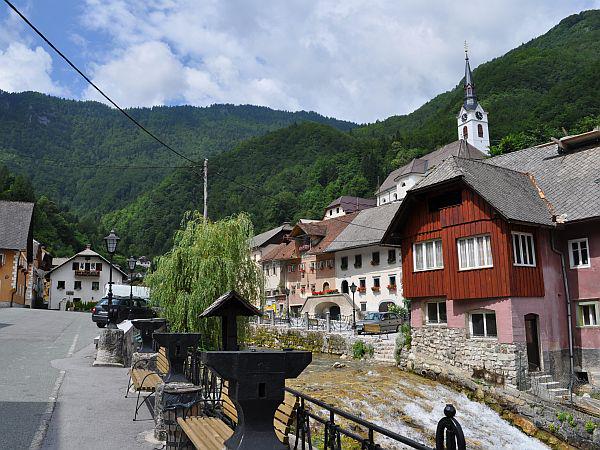
Not far from Slovenia’s famous Lake Bled, in a narrow ravine below the thickly forested Jelovica plateau, besides a lively mountain stream, snuggles the small, picturesque town of Kropa. Even a short walk around the town reveals an abundance of ornate wrought-iron objects at every step. Kropa’s scenic location and is history of blacksmithing are not coincidental; they have been linked since the area was first settled.
Metalworking has existed in Kropa since the Middle Ages. The location of the town was perfect: The Jelovica plateau provided abundant iron ore and fuel in the form of wood, while the town’s stream – the Kroparica -- provided plenty of energy to run the forges. The town experienced its first boom in the 14th century, and its growth continued for years.
Just a century later, large forges produced more than a hundred different types of nails, and Kropa soon began to export nails and other metal products to markets across Europe, mostly to modern-day Italy. Austrian emperors and local nobles imported workers from other Austrian crown lands, primarily Carinthia, Tyrol and Friuli, to cope with the growing demand for labor. The workers were prized so highly that they even excused from military service. (Some evidence of this migration remains in the distinctive local dialect, which is different from that of nearby towns.)
By the early 19th century, Kropa boasted almost 30 forges, as well as two iron foundries. The town’s metalworking craft was thriving and it employed more than a thousand people. It was tough labor: Three days a week, the ironworkers would spend their entire days – from dawn to dusk – working in the heat, noise, and dust of the forges. They were accompanied by their children, who helped out, and by their wives, who cooked meals for the families. Three days a week, the work ended after lunch, and Sundays were always day of rest.
The advent of industrialization, however, began to change the town’s fortunes by the late 19th and early the 20th century. Many of the items that had been made by hand for centuries could now be manufactured more cheaply in factories, and in an era of improved rail and road links, the proximity of natural resources was becoming less important.
Postwar authorities did make an effort to keep metalworking in Kropa. One of the surviving furnaces became the Plamen nail factory after World War II, but the company traded heavily with other Communist nations and went bankrupt after the fall of communism. A German company revived Plamen a few years later, and the new factory now employs some 80 people.
Meanwhile, many craftsmen in Kropa focused their efforts in creating ornate wrought ironworks, which required traditional skills that could not be produced by modern industrial techniques. The strategy of emphasizing quality over quantity proved to be successful, and Kropa is still synonymous with decorative cast-iron fittings.
The town is also counting on tourism to become increasingly important in the years ahead. While Kropa still lies far from the well-trodden tourist routes, and its tourist facilities are few, the picturesque old town has been protected, and visitors are encouraged to learn about the area’s past at Kropa’s Iron forging Museum. In addition to a wide range of historic artifacts, the museum includes intricately 42 wrought iron pieces by the late Joža Bertoncelj, one of the greatest ironworking masters of the 20th century. A preserved forge, known as Vigenj Vice, gives tourists an opportunity to observe the traditional manufacture of nails and other metal products – a craft that has given Kropa life for centuries, and which may yet give the town a second life as a tourist destination.


































































